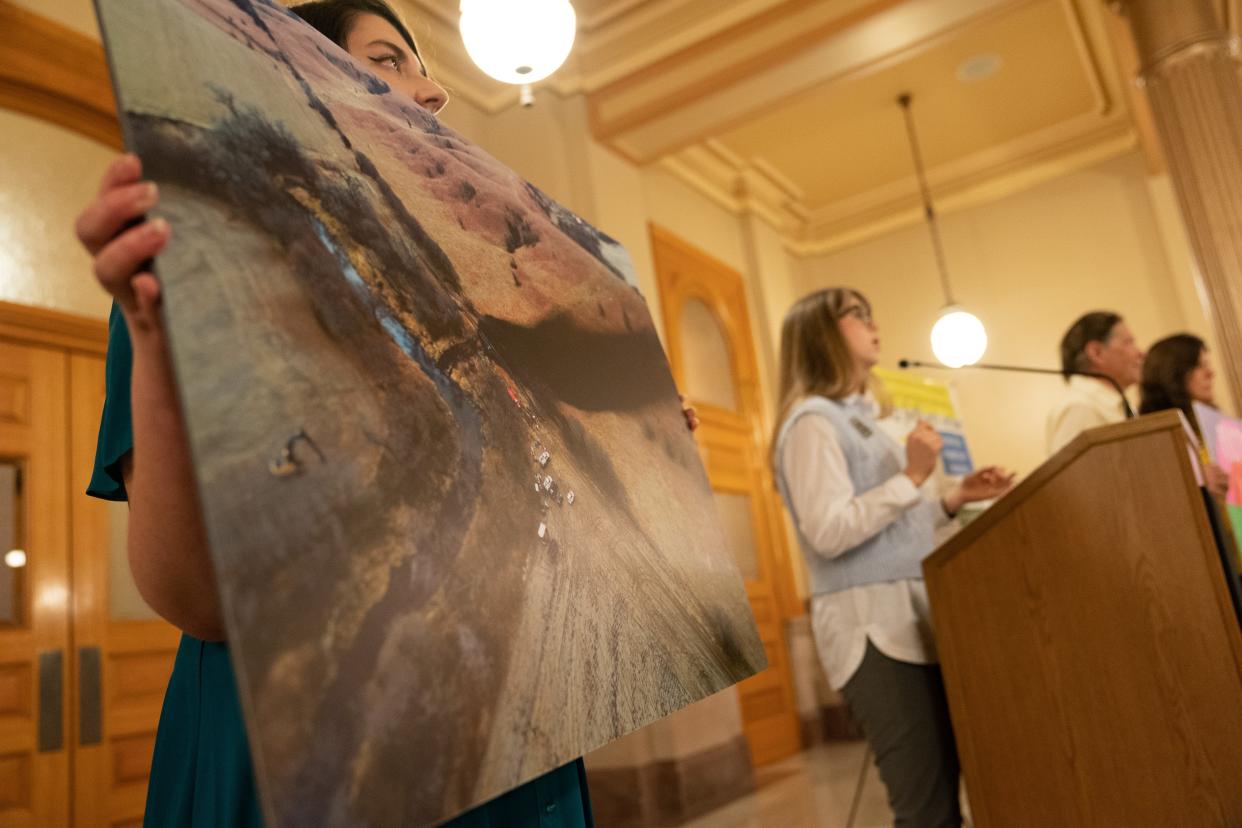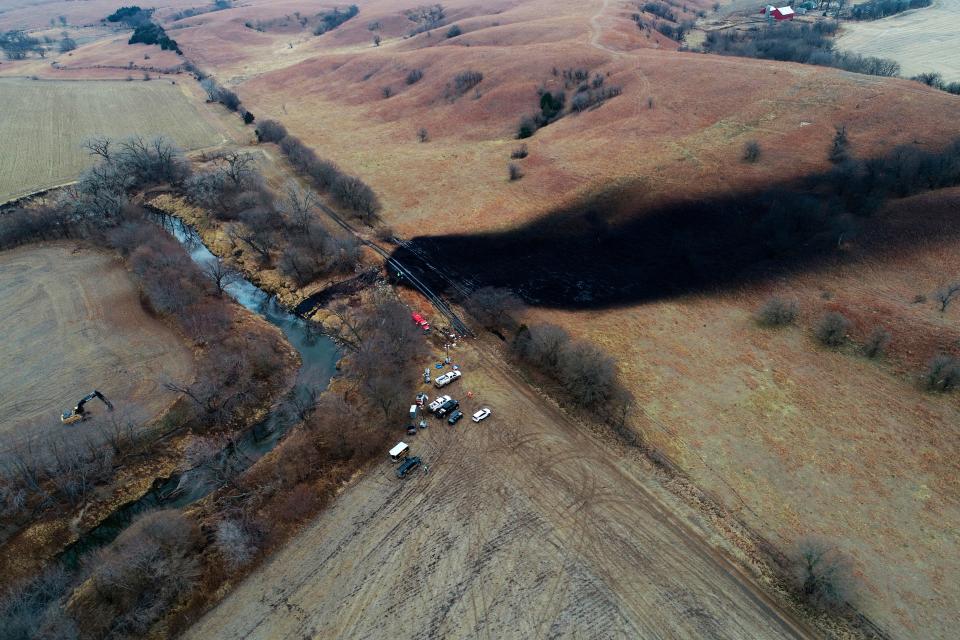Pipeline operator investigates similar sites to Kansas oil spill — but won't say where

The operator of the Keystone pipeline said it is working to investigate sites with similar characteristics to the site of a major north-central Kansas oil spill, but it is unknown how many of those exist and whether any are in Kansas.
In a news release last week, TC Energy said they had received a more detailed analysis of the causes of the Washington County spill, when 12,000 barrels of crude oil flowed from the Keystone pipeline into Mill Creek in the largest spill in the pipeline's history.
The full document wasn't made public but the company's summary of its findings largely mirrored a more preliminary breakdown of the spill and its causes. It was commissioned at the behest of federal regulators in the wake of the spill.
The more detailed version of events said a weld connecting a fitting to the pipe sustained a fatigue crack. While the welding was performed off-site at a fabrication facility, TC Energy said the welding was up to standards. Stress during construction also caused a deformation in the affected pipe segment.
TC Energy said throughout the pipeline's life, the affected segment has operated below the maximum pressure allowed, though that segment had received a waiver from federal regulators to exceed previously approved limits.
To date, the Canadian firm said it has recovered 98% of the oil spill and cleaned up 90% of Mill Creek's shoreline, with cleanup costs expected to run upwards of half a billion dollars. The pipeline resumed operations in late December, less than a month after the spill happened.
"We are unwavering in our commitment to fully remediate the site and are taking action on the recommendations from the RCFA," Richard Prior, president of liquid pipelines for TC Energy, said in a statement. "We will not stop until we have completed this work."

More: Keystone pipeline operator grilled on Kansas oil spill. Cleanup timeframe is uncertain.
The company has maintained that a unique confluence of events led to the pipeline failure. But part of its plan to implement recommendations contained in the report will include "excavations to investigate other sites with characteristics like the incident location."
It is unclear where those sites are, however. TC Energy didn't respond to questions about whether any of those excavations had occurred in Kansas.
When asked by legislators about how many similar welds might exist across the pipeline system, Gary Salsman, TC Energy's vice president of field operations, said in February that it was "not a huge number."
This hasn't satisfied some legislators and environmental activists, who worry that other parts of the state could be at risk, particularly in south-central Kansas where seismic activity has become increasingly common.
The company has also begun inspections throughout the pipeline, including the 300-mile segment that includes north-central Kansas.
The Keystone pipeline carries oil from the tar sands of Alberta to facilities in Texas and Illinois.
A 2021 General Accounting Office report shows spills on the pipeline have become more frequent in recent years and a federal order also said at least three incidents since 2009 have occurred because of girth welding failures.
This article originally appeared on Topeka Capital-Journal: Keystone pipeline operator investigates after major Kansas oil spill

